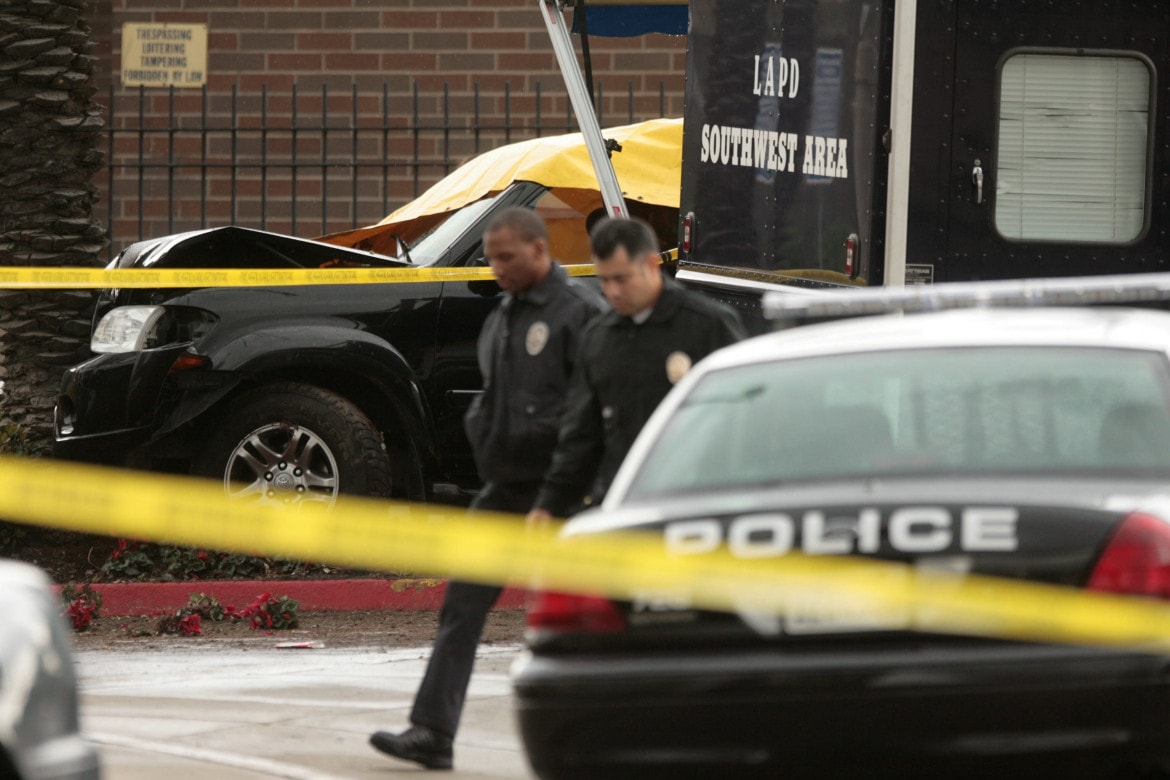Regional group to look into the issue of police pursuits
 This AP file photo shows the wreckage after a Los Angeles pursuit that topped 100 mph and moved through two counties. (Photo: AP/Damian Dovarganes, 2008)
This AP file photo shows the wreckage after a Los Angeles pursuit that topped 100 mph and moved through two counties. (Photo: AP/Damian Dovarganes, 2008)
Published July 8th, 2015 at 4:04 PM
A regional planning group says it will wade into the issue of conflicting police pursuit policies in the Kansas City area.
The decision by Mid America Regional Council (MARC) to study the issue comes in response to an in-depth look at area police pursuits published Sunday by the Hale Center for Journalism and The Kansas City Star.
The Hale Center found, among other things, that conflicting policies across the area contributed to some of the 706 police pursuit crashes over the last decade that killed 23 people and injured hundreds more, including 11 police officers.
“The article raised some important and compelling questions that police departments have always taken seriously,” said David Warm, MARC’s executive director. “I’m confident the inquiry will cause many to assess the risks of police pursuits.
“At MARC, we intend to discuss the issue informally with area policy leaders at the regional level.”
The Hale Center study also found that the two-state, six-county metropolitan area is a confusing patchwork of at least 60 different pursuit policies that can range from three to 14 pages long. Yet area police chiefs have been reluctant or unwilling to discuss regional initiatives that could lead to reducing deaths and injuries by standardizing policies.
Warm said Wednesday that, in light of the article, he sensed a mixed interest “on moving forward on a unified policy at the regional level.”
But he added that, given all the different interests, “A unified metropolitan policy may or may not prove feasible or even desirable.” He said a “subset” of cities may be willing to work together and that MARC would try to help them balance law enforcement efforts and protecting public safety.
He said that might include departments sharing model pursuit policies and best practices, or exploring new technologies to aid in such pursuits.
Developing regional police pursuit policies is a challenge, and that’s why there are few of them across the country, Warm said. He said regional policies are usually very general. If they are restrictive — such as limiting pursuits to violent felonies, as some area cities already do — “they are not broadly embraced.”
But either way, he added, the article made it clear that deaths, injuries and conflicting area policies deserve “a robust and thorough analysis both by individual departments and cooperatively among departments.”



